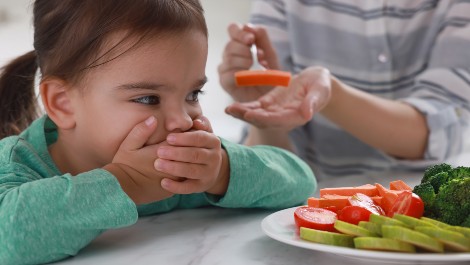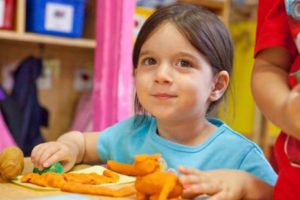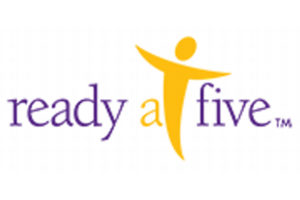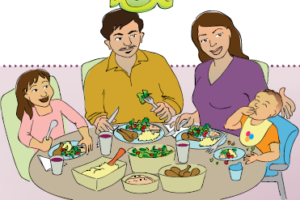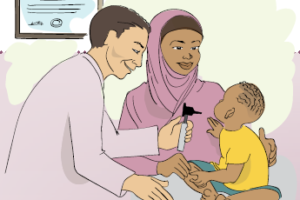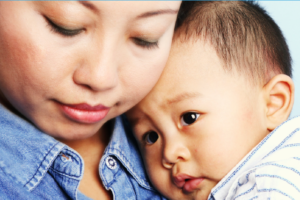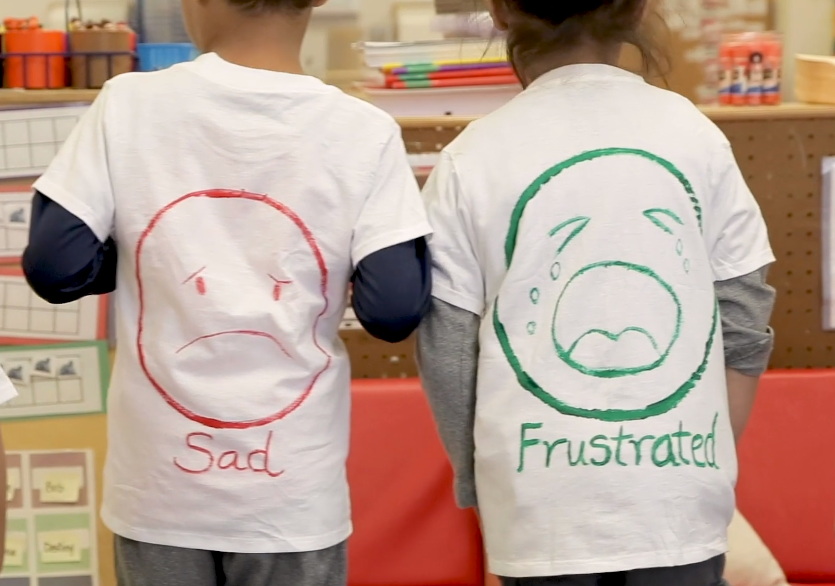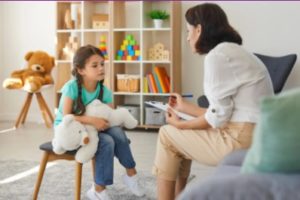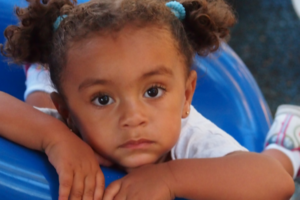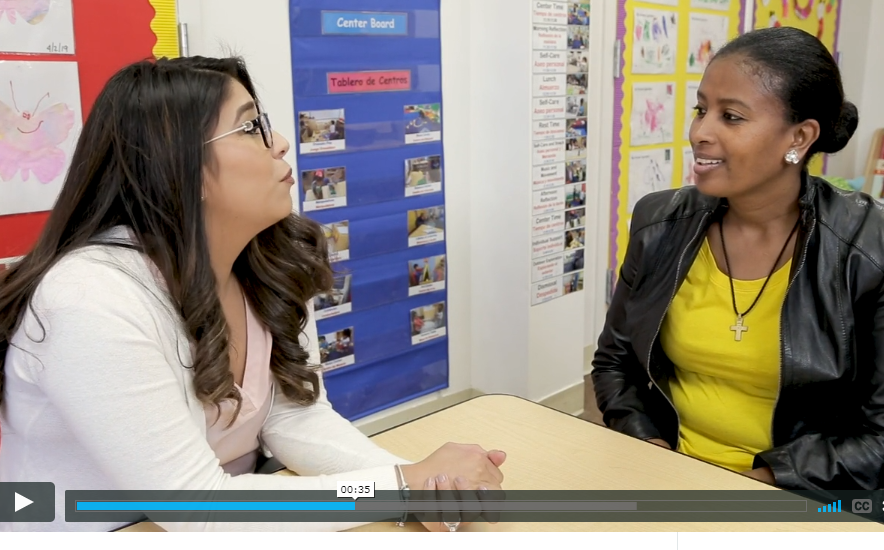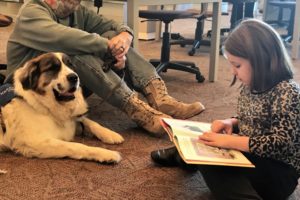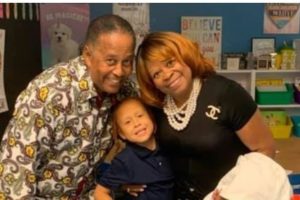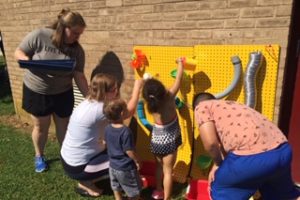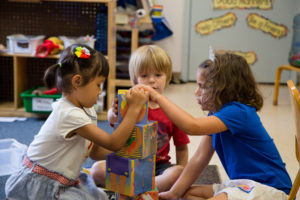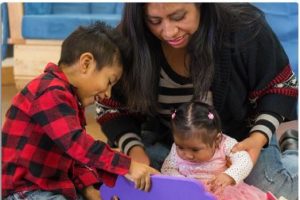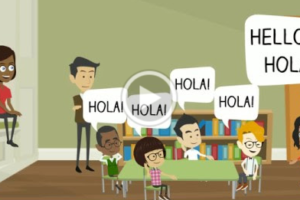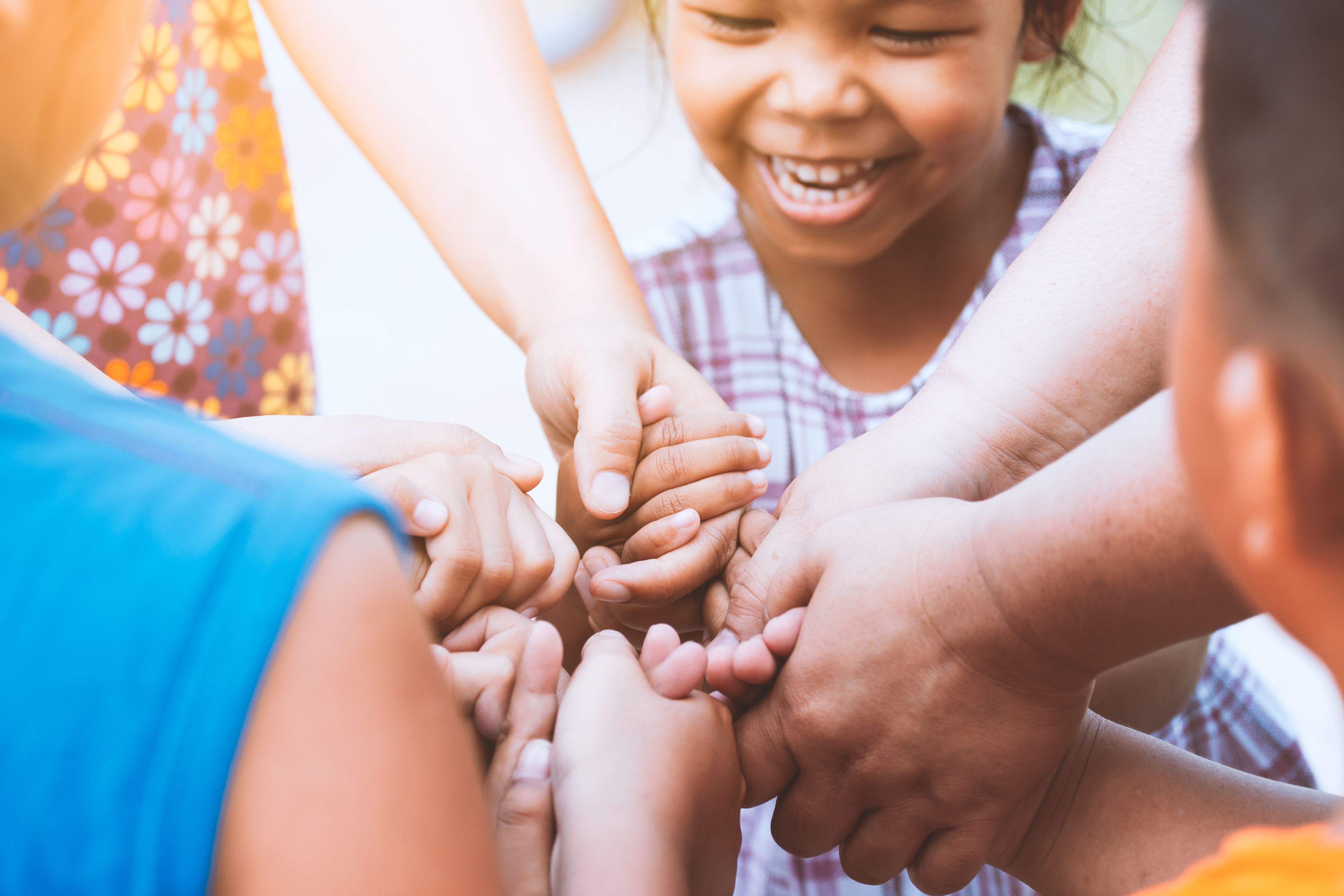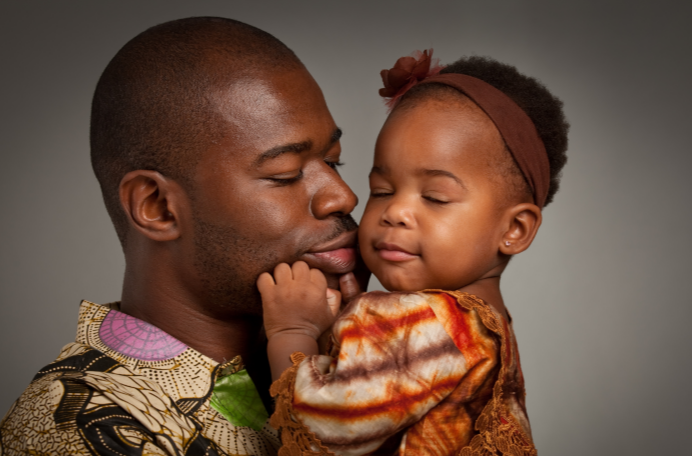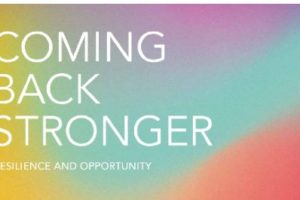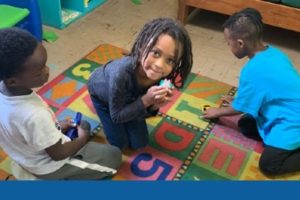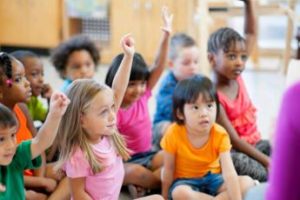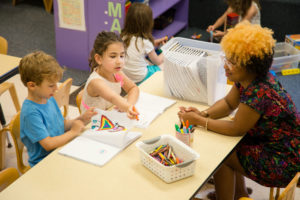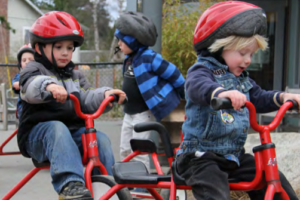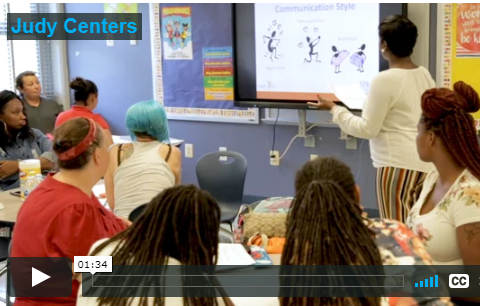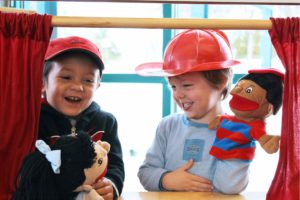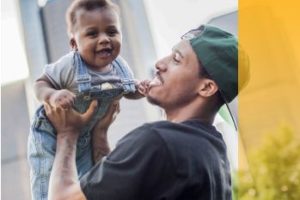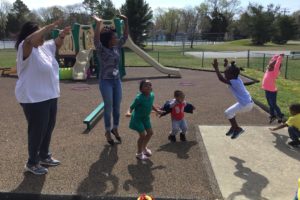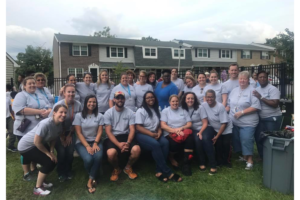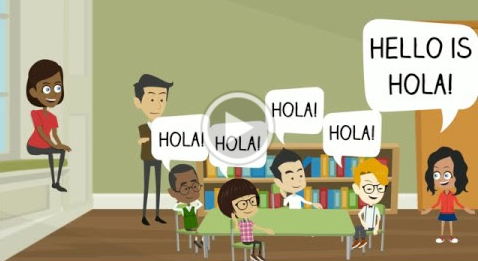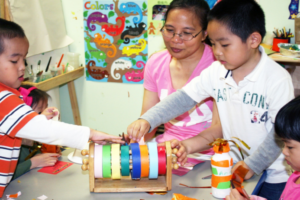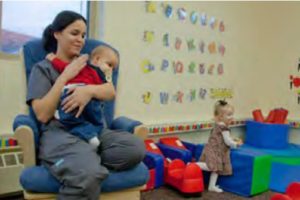Goal 1: Family Engagement Initiatives Should Promote Family Well-Being
Maryland’s vision for family engagement is a . Families are the key to a child’s early development and learning. A goal of family engagement initiatives must support family well-being.
Quick Tips
CPR – Concerns Priorities Resources
To effectively partner and build relationships with families, we must be aware of and validate their concerns, priorities and resources.
Family Voice
“When my child has been sick, the staff have checked on her and also provided helpful information to help her feel better. It leaves a good feeling to know the staff cares about our well-being.”
– Parent, Greenbelt Children’s Center, Prince George’s County
Strategies
Program Leadership and Professional Development
Family well-being is critical to children’s success. Programs that are invested in improving a family’s well-being will provide professional development opportunities in this area. Below are topics and trainings that can help support you as you partner with families:
Goal 2: Family Engagement Initiatives Should Promote Positive Parent-Child Relationships
View PDF of Goal Link opens in a new window
When children have a secure attachment to their families or parents, they are more likely to get along with adults and peers, have increased academic performance, and have higher self-esteem.
Family Voice
“When we first enrolled, I wasn’t that active, but now I am more active. The reminders from the school helped. I am able to be more engaged with my daughter and the activities. The program has really helped me to be more motivated with parenting. I have a child that’s willing to learn and that encourages me.”
– Parent, Arlington Judy Center, Baltimore City
Strategies
Program Leadership and Professional Development
To support parent-child relationships, it is crucial to understand that families’ experiences and cultural differences impact parent and child relationships.
Goal 3: Family Engagement Initiatives Should Support Families as Lifelong Educators of Their Children
View PDF of Goal Link opens in a new window
Parents and family members are their child’s first teachers (i.e. the first ones in line to support their children’s learning). Maryland initiatives and the practices of early care and education providers should create collaborative relationships with a variety of service entities to support and empower the family in its role as first teacher.
Quick Tips
Help parents and families understand that by taking the time to teach their children routines and activities, they are supporting their children’s learning! To reinforce what you do every day in your program or classroom, share with families the Maryland Families Engage Family Activities by printing as a handout or including in your monthly newsletter.
Family Voice
“We come every week. You can see in every center that learning is the goal. After coming here, my child asks me to help sort socks and tells me about the colors. She also talks about different types of food at the grocery store.”
– Parent, Storyville, Baltimore County Public Library
Strategies
Program Leadership and Professional Development
When programs recognize a family’s needs and how to support them, they have a true partnership, which supports early childhood learning. The mission of a program should include supporting staff as they bring parents into an educational partnership. The following is a helpful guide to establish your goals and strategies to support families:
To support parents as their child's first teacher, providers need to:
- Build relationships with families so that they see you as a resource and a trusted source of information.
- Provide parents with resources and skills so they feel empowered in their roles as parents and teachers.
- Develop a consistent message about ways in which parents can help.
- Ask and listen to what parents and families need to provide learning opportunities for their children.
- Provide professional development to support staff to appropriately engage with families and collaborate with families.
To be effective first teachers, parents and families need:
- An understanding of how and when children learn, including an awareness of developmental milestones.
- Ideas for supporting and planning spontaneous and intentional learning opportunities.
- Knowledge of the benefits of early learning.
- An environment in which learning is encouraged and supported.
Goal 4: Family Engagement Initiatives Should Support the Educational Aspirations of Parents and Families
View PDF of Goal Link opens in a new window
Programs such as Head Start, Maryland Family Support Centers and Maryland Judy Centers follow the , which addresses the education and well-being of both child and parents. When programs help to educate families and empower them with skills to help them economically, they can help change the future for that child and family.
Quick Tips
Help engage parents and families as volunteers by adding them to your lesson plans. This will encourage more participation in program or classroom activities. Create a Parent Committee that partners with teachers and providers to identify a project, event or need for the program or school.
Family Voice
“Many parents assume that is the teacher’s responsibility to take care of everything when it comes to education and school, but parents need to be involved, too. Our children’s education is just as much, if not more, our responsibility as it is the teachers and we need to set that example for our children.”
– Parent, Carroll County Parent Leadership Training
Strategies
Program Leadership and Professional Development
When education is valued for all, staff, families, and children are encouraged and motivated to learn and grow. Early care and education providers can prepare to engage parents by becoming familiar with the different types of education and training opportunities offered to families, including ESL programs or GED classes, computer skills training, and trainings or programs at the local college.
Goal 5: Family Engagement Initiatives Should Support Families Through the Care and Education Transitions of Early Childhood
View PDF of Goal Link opens in a new window
When a child to a new learning environment, the child and the family change setting, teacher, and learning culture. These transitions are challenging for parents and families, and for providers and teachers, to navigate.
Family Voice
“After the transition to Kindergarten, the social development encouraged in his younger years with the typical peers is clearly evident now. ‘Inclusion’ is what any parent wants for their child, but for a parent of a child with special needs… it’s a dream come true.”
– Parent, Kids Campus Early Learning Center, Calvert County, MD
Strategies
Program Leadership and Professional Development
To ensure transition strategies are in place to support all families and all types of transitions, effective leadership is essential. Program leadership can create and promote policies and procedures to ensure smooth transitions.
Goal 6: Family Engagement Initiatives Should Connect Families to Their Peers and the Community
View PDF of Goal Link opens in a new window
Personal networks are a key source of support for families with young children. Learning from one another and sharing common experiences can inform parent and families about resources, expand parenting strategies, and offer a source of comfort.
Family Voice
“To know that the school and the Judy Center work together along with the community makes you feel good and a part of something special. I have been able to meet and build relationships with a lot of parents I probably would not have known if it was not for some of the trips and events the Judy Center offers.”
– Parent, Charles County Judy Center
Strategies
Program Leadership and Professional Development
Creating a – an environment that is safe and respectful where all adults, including staff and parents, can learn from each other – is important. Everyone can ask for the kinds of topics/information that they need and find helpful means for investing in high-quality professional development and coaching.
Ten key characteristics of learning communities are that they:
- Bring new players together.
- Seek to reach the most “in need.”
- Focus on learning from and with each other and share a belief that there is expertise amongst everyone.
- Focus on active learning that is experiential and engages participants in self reflection and self-discovery.
- Use new media to connect in creative ways.
- Actively create new curricula based on sound principles of child and adult learning and development.
- Focus on assessment, but tie assessment to child development.
- Reframe teaching as teaching AND learning together.
- Connect policy to practice.
- “Pay it forward.”
Goal 7: Family Engagement Initiatives Should Support the Development of Families as Leaders and Advocates
View PDF of Goal Link opens in a new window
When parents and families are empowered, they can be a strong force for positive change in their child’s education and in many other areas of life. Therefore, family engagement practices of early care and education providers should support families to participate in leadership development, decision-making, program policy development, and community and state organizing activities to improve children’s development and learning experiences.
Quick Tips
Sometimes just looking the part can help parents and families feel more comfortable! Try giving them a notepad, pen, and a bottle of water to help them look and feel more prepared for meetings, trainings, or workshops.
Family Voice
“When I started at the Family Support Center, my goal was to get my GED before my daughter graduated high school. She not only graduated high school, but she is enrolled in college.”
– Parent, Our House Family Support Center, Maryland Family Support Network Spring Training
Strategies
Program Leadership and Professional Development
When supporting families as they grow into leaders, providing professional development and training for both families and staff is essential. Staff members need to be aware of how they can provide support and can help to coach and teach families the skills they need to help their children.



